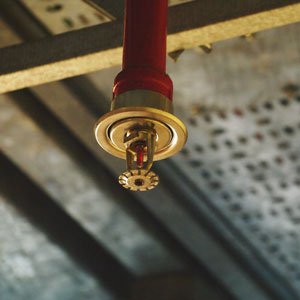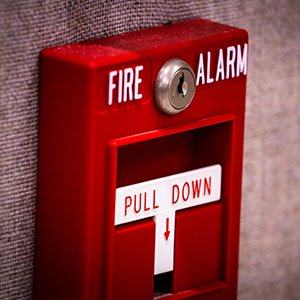Jump straight to a section:
Construction sites are inherently hazardous environments, and fire risks are among the most dangerous and costly threats. In New York City, the FDNY and Department of Buildings (DOB) have significantly strengthened fire safety protocols in recent years, especially following tragic incidents like the Deutsche Bank fire of 2007, which claimed the lives of two firefighters due to blocked egress and disabled sprinkler systems.
Today, NYC construction sites must adhere to a comprehensive set of fire safety regulations that include daily inspections, standpipe and sprinkler system maintenance, and the designation of a Construction Site Fire Safety Manager (CSFSM). These measures are designed to prevent fires, ensure rapid emergency response, and protect workers and the public.
The Role of the Construction Site Fire Safety Manager (CSFSM)
Under NYC Building Code and Fire Code regulations, any site that requires a Site Safety Manager (SSM) or Site Safety Coordinator (SSC) must also designate a CSFSM. This individual must hold an S-56 Certificate of Fitness issued by the FDNY.
The CSFSM is responsible for:
- Developing and maintaining a Pre-Fire Plan tailored to the site.
- Conducting daily inspections of fire safety measures.
- Supervising hot work operations and issuing authorizations.
- Monitoring fire extinguishers, alarms, and suppression systems.
- Ensuring clear egress paths and emergency access.
- Acting as the Impairment Coordinator when systems are offline.
- Liaising with the FDNY during inspections and emergencies.
For buildings 20 stories or 250 feet and above, or with lot coverage of 200,000 square feet or more, the CSFSM must be present at all times during active construction, demolition, or alteration work.
Standpipe and Sprinkler Systems: Lifelines in Emergencies

NYC mandates that standpipe systems be installed and maintained in buildings under construction once the working deck reaches 75 feet above ground. These systems must:
- Serve all floors, including those below grade.
- Be painted red to indicate readiness.
- Be maintained as dry systems during construction or demolition.
- Include an air pressurized alarm system to detect leaks or tampering.
Sprinkler systems must also be installed and tested before any portion of the building is occupied. Control valves must be inspected daily, and any impairments must be logged and reported to the FDNY. Only Licensed Master Plumbers or Licensed Fire Suppression Contractors may cut or cap these systems during demolition. Source: codelibrary.amlegal.com.
Hot Work Operations and Fire Watch
Hot work—such as welding, grinding, or torch use—is a leading cause of construction fires. NYC requires:
- A hot work permit from the FDNY.
- A Fire Guard with an F-60 Certificate of Fitness for torch operations.
- A Fire Watch for other spark-producing activities.
- Daily inspection logs and authorization records.
The CSFSM must supervise all hot work and ensure that fire guards are trained, equipped, and actively monitoring the site during and after operations.
Common Violations and Enforcement
In 2025, FDNY issued over 900 CDA violations related to fire safety on construction sites. The most common infractions include:
- Blocked or obstructed exits.
- Missing or expired fire extinguishers.
- Improper storage of flammable materials.
- Unauthorized hot work.
- Faulty or unpainted standpipe systems.
- Inadequate signage and emergency lighting.
Violations can result in:
- FDNY Summonses requiring correction within 35 days.
- Criminal Court Summonses for serious or repeated offenses.
- Vacate Orders if conditions pose immediate danger.
Contractors and site managers must maintain daily logs, submit Certificates of Correction, and ensure all personnel are trained in fire safety protocols.
Emergency Planning: Pre-Fire and Evacuation Plans

Every construction site must have a Pre-Fire Plan and an Evacuation Plan available for FDNY inspection. These plans must include:
- Site layout maps with access points, hydrants, and standpipes.
- Locations of fire protection systems and hazardous materials.
- Designated fire watch personnel and patrol routes.
- Primary and secondary evacuation routes.
- Assembly points and accountability procedures.
- Roles and responsibilities during emergencies.
Plans must be site-specific, updated regularly, and communicated to all workers.
Lessons from the Deutsche Bank Fire
The 2007 Deutsche Bank fire remains a sobering reminder of what can go wrong when fire safety is neglected. The building’s standpipe system was out of service, exits were blocked, and the fire spread rapidly. In response, NYC enacted stricter laws requiring:
- Inspection and maintenance of standpipes and sprinklers.
- Daily fire safety inspections.
- Mandatory presence of CSFSMs on high-risk sites.
These lessons continue to shape NYC’s fire safety regulations today.
Training and Certification
To become a CSFSM, individuals must:
- Maintain ongoing education and compliance with DOB and FDNY updates.
- Complete the Construction Fire Safety Manager (S-56) Training Course.
- Training and Certification
- To become a CSFSM, individuals must:
- Maintain ongoing education and compliance with DOB and FDNY updates.
- Complete the Construction Fire Safety Manager (S-56) Training Course.
- Pass the FDNY Certificate of Fitness exam.
Learn More – Link to: nyc.gov
Ready to start training?
Training providers like GBTS Training Academy offer comprehensive courses that cover fire code, emergency planning, hot work supervision, and more.
